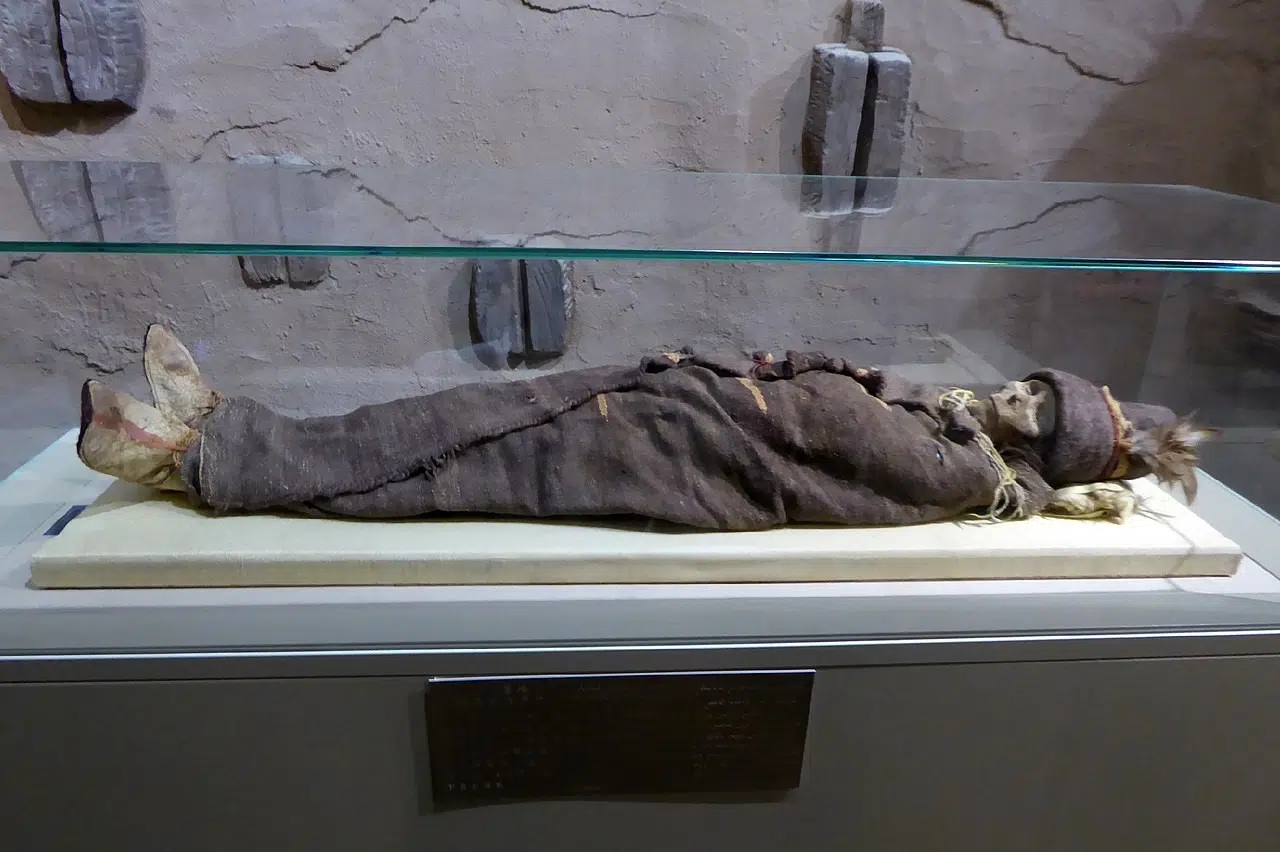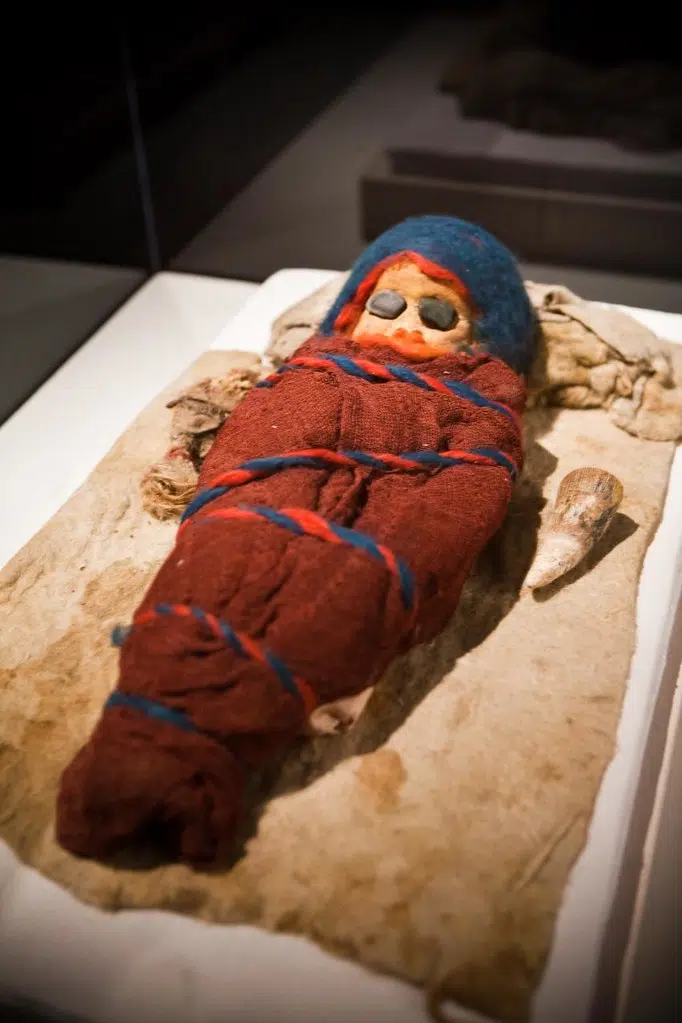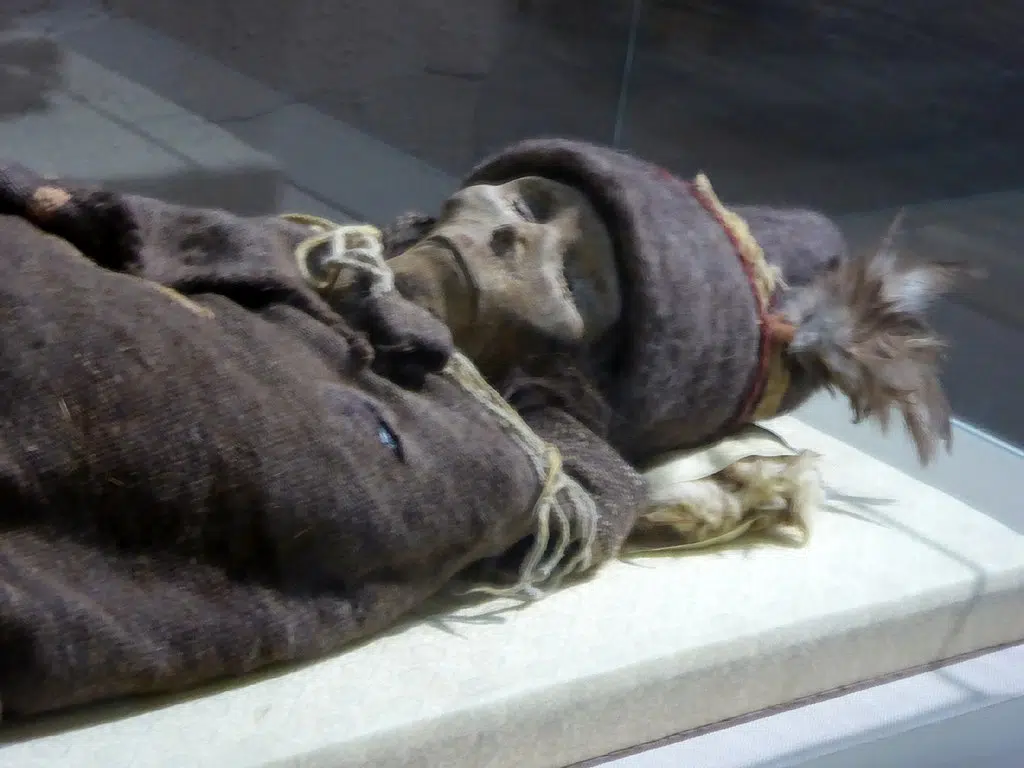
The mysterious origins of hundreds of mummified bodies, known as the Tarim Basin Mummies, which were found buried in boats in an uninhabitable region of desert in the Xinjiang Uyghur Autonomous Region in northwest China, have been uncovered.
The Tarim Basin mummies were discovered in 1990 with their bodies and clothing noticeably intact despite dating back to around 4,000 years ago. Their facial features and hair color are clear, having been preserved naturally by the dry desert air.
The mummified specimens were found buried in boat-shaped coffins kept in the shade by cow hides. Beside them were items indicating a farming society—wheat, barley, cheese, as well as livestock such as sheep, goats, and cattle.
Given the appearance of the mummies—tall, with wool felt hats, leather boots, and some with fair hair—researchers at first believed they must have been from a foreign land. However, genetic studies carried out on thirteen well-preserved mummies showed that the bodies were not those of migrants who brought technology from the west, as previously thought, but locals, with deep roots in the area.
Where did Tarim Basin Mummies found in China originate?
In a study in the scientific journal Nature, researchers analyzed genetic data from the mummies and concluded that the bodies date back to between 2,100 and 1,700 BC. They also identified their place of origin.
They seem to be relics of an ancient population that vanished from Eurasia some time after the last Ice Age, a culture that was ancestral to indigenous people living in Siberia and the Americas today.
Even bodies that were 400 kilometers apart, buried at opposite ends of the Tarim Basin, shared a likeness of DNA to the point that it resembled a sibling relationship. Despite the fact the mummies were local and had not interbred with migrant herders in neighboring mountain valleys, they were not culturally isolated.
By around 4,000 years ago, they were already practicing new ideas and embracing new cultures, evidenced by the fact they wore woven woolen clothing, built irrigation systems, grew non-native wheat and millet, herded goats and sheep, and milked cattle for cheese.

Although previous studies have confirmed that the Tarim Basin mummies lived on the shores of an oasis in the desert in China, it is still unknown why they were buried in boats protected by cattle hides with oars by their heads. This was a practice not seen anywhere else in the region and was most commonly associated with Vikings.
The group had inhabited the area for some time, according to the study, and had a distinct local ancestry, which overrides theories that they were herders from the Southern Russian Black Sea region, Central Asians, or early farmers on the Iranian Plateau.
Christina Warinner, one of the study’s authors and professor of anthropology at Harvard University, said in a statement: “The mummies have long fascinated scientists and the public alike since their original discovery. Beyond being extraordinarily preserved, they were found in a highly unusual context, and they exhibit diverse and far-flung cultural elements.”

Various other researchers involved with the study have also confirmed it was possible for a population to be genetically isolated while still being influenced by other cultures.
On top of analyzing genomes sequenced from the remains of five individuals from the Dzungarian Basin further north in the Xinjiang Uyghur Autonomous Region of China, the research team examined genetic data from the oldest mummies of the Tarim Basin, which date back to between 3,700 to 4,100 years ago.
See all the latest news from Greece and the world at Greekreporter.com. Contact our newsroom to report an update or send your story, photos and videos. Follow GR on Google News and subscribe here to our daily email!



